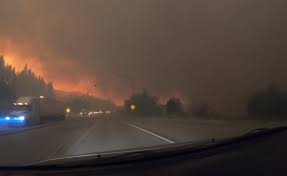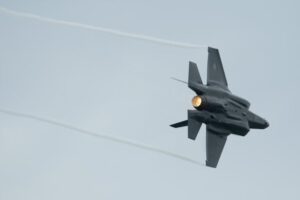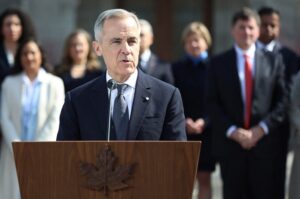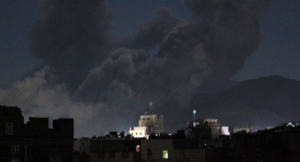
Canada is sending the military to tackle fast-spreading wildfires in British Columbia, Prime Minister Justin Trudeau said on Sunday, as the western province deals with flames that have led to evacuation orders for more than 35,000 people.
British Columbia declared a state of emergency and imposed a ban on non-essential travel to free up accommodations for evacuees and firefighters, and urged drone operators and others capturing images of the fires to stay clear of rescue workers.
In some cities in British Columbia, the air quality index (AQI), which measures major pollutants including particulate matter produced by fires, was above 350, a “hazardous” level, IQAir, a real-time air quality information platform showed.
At midnight (0400 GMT), Salmon Arm was recording the nation’s worst air quality index, with an AQI reading of 470. Among other cities, Kelowna College and Sicamous both had the AQI at 423.
West Kelowna fire chief Jason Brolund said he saw some hope after battling “epic” fires for the past four days. He said conditions have improved, helping firefighters to put “boots on the ground” and dump water on flames that threatened the town of 150,000.
“We are finally feeling like we are moving forward rather than moving backwards, and that’s a great feeling,” Brolund told the Canadian Broadcasting Corp.
Trudeau said in a tweet that the federal government will offer support from the Canadian military “to help with evacuations, staging,” and other logistical tasks in response to a request from the British Columbia government.
Forest fires are not uncommon in Canada but the spread of blazes and disruptions underscore the severity of its worst wildfire season yet, which some experts have blamed on climate change.
Other fires, exacerbated by severe drought, have been reported closer to the U.S. border and in the U.S. Pacific Northwest.
Just across the border in Washington state, firefighters battled two major blazes, the Gray Fire and the Oregon Road Fire, which combined had blackened more than 20,000 acres of forest and destroyed more than 100 structures.
In Canada, government officials urged residents in evacuation order zones to leave immediately to save their lives and prevent firefighters from dying trying to rescue them.
Officials have not given any estimates of the total number of buildings destroyed. Videos and photos on social media showed destroyed structures and vehicles, and huge flames consuming trees.
The Canadian government-owned Trans Mountain pipeline and its expansion project, which makes it way to the Pacific coast through the interior of British Columbia, was unaffected by the fires, a company spokesperson said on Sunday.
The Coquihalla stretch of the pipeline expansion, southwest of Kamloops, is the closest to fire.
“Underground pipelines are typically buried a few feet below the surface and are protected from fire by the soil and the constant movement of liquid moving through the pipeline,” the spokesperson added.
The fires have drained local resources and drawn in federal government assistance as well as support from 13 countries. At least four firefighters have died.
About 140,000 square km (54,054 square miles) of land, roughly the size of New York state, have been scorched nationwide, with smoky haze extending as far as the U.S. East Coast. Government officials project that the fire season could stretch into autumn because of widespread drought-like conditions.
Since 2009, Canada has been spending more on fighting and suppressing wildfires than on maintaining its firefighting personnel and program.
Since 2009, Canada has been spending more on fighting and suppressing wildfires than on maintaining its firefighting personnel and program.
About 2,000 km to the north, a wildfire burning out of control in Yellowknife, the capital city of Northwest Territories, had triggered evacuations of almost all of its 20,000 residents last week.
The fire is not expected to reach city limits by the end of the weekend, officials said, with some rain and cooler temperatures helping slow its progress.
Krista Flesjer, who evacuated from the city with her dogs, said it was a rough trip.
“I was afraid of getting caught in the fires that were coming across the road,” she said.
For Flesjer, the main worry is whether her house, which is just two years old, would survive.
In British Columbia, the TransCanada highway was closed near Chase, about 400 km (250 miles) northeast of Vancouver. The highway is the main east-west artery used by thousands of motorists and truckers heading to Vancouver, the country’s busiest port.
Kip Lumquist, who works at a gift shop in Craigellachie, a tourist spot on the highway, said she had seen a lot of devastation over the past week.
“It was crazy. We couldn’t see the hills, the mountains, the trees, anything, probably (for) two and a half days,” Lumquist said. “I drive a white vehicle, and when I walked out to get in my car … it’s just black. … It’s devastating to the community.”







